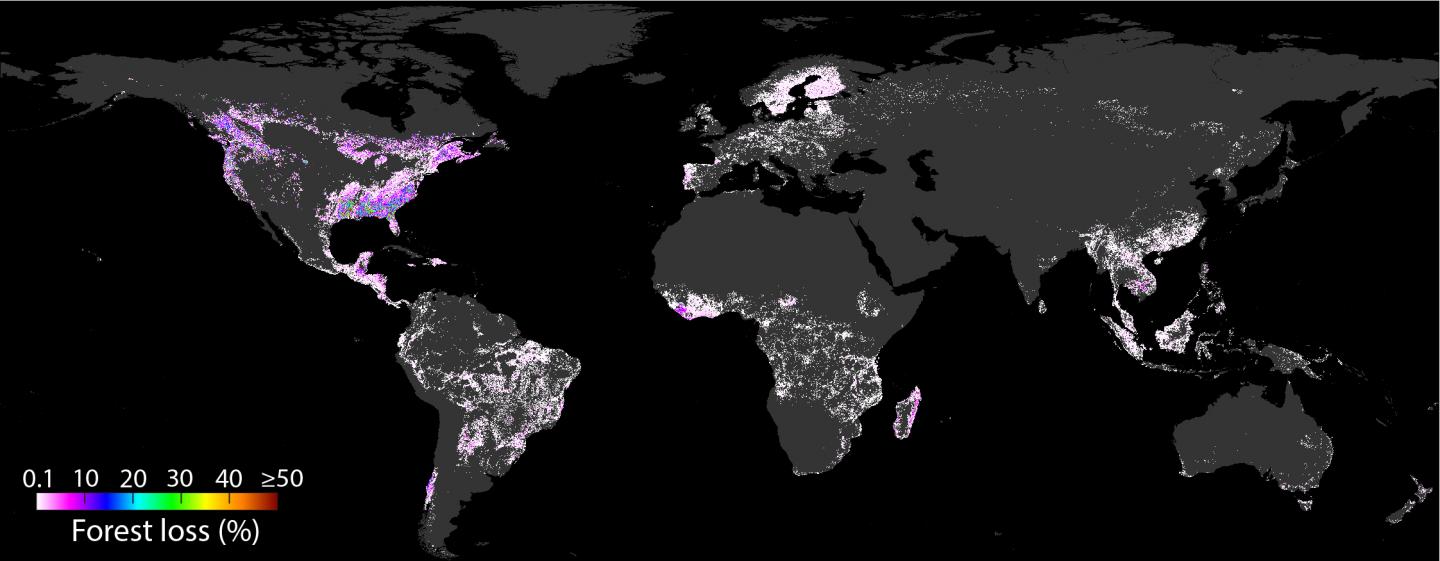
Credit: Hoang and Kanemoto
In the last few years, as climate changes continues to become more severe, there has been a growing push for rich countries to pay poorer ones to preserve and protect rain forests and other tropical forests. However, according to a new study in Nature Ecology & Evolution, RIHN Associate Professor Keiichiro Kanemoto and Senior Researcher Nguyen Tien Hoang show that other financial motives, namely international trade, with these same rich countries have actually encouraged poorer countries to increase their annual deforestation levels from 2001 to 2015.
Every year has brought more catastrophic news on climate change. Islands in the South Pacific are disappearing, and Siberia is on fire. Radical changes are coming in our lives and lifestyles, but the most important in lowering our global environmental footprint. One effort for this cause is reducing the amount of deforestation.
Forests cover nearly one third of the earth’s land area. Moreover, tropical forests are estimated to provide the habitat of anywhere between half to 90% of all the terrestrial species. They are also home to an unknown number of pathogens that escape with deforestation, which can explain some of the epidemics seen in recent years. Frustratingly, despite their importance for both human and ecological health, forests are being brought down at an alarming rate because of their valuable land for mining, farming and other commodities.
“The relationship between deforestation and the demand for commodities by rich countries has been established. What has not been clarified is the spatial distribution of the deforestation associated with the trade of those commodities,” explains Kanemoto.
To understand how trade and deforestation correlate, he and Hoang used big data that they describe as “high-resolution data of forest loss, a spatial classification of deforestation drivers and a detail global supply chain model” to prepare maps of deforestation footprints over time and space. This allowed them to identify which nations have driven deforestation through their consumer demands for products such as soybeans, cocoa and timber.
Trade with the world’s biggest economies had a clear correlation with deforestation, but the footprint depended on the demanded product. China caused major deforestation in East Asia for timber, while Japan’s footprint was greater in Africa for several agricultural commodities, such as vanilla, cotton, and sesame seed. Germany also had a large footprint in Africa but because of its demand for cocoa.
Ultimately, the United States, with its high demand for several commodities, had the most distinguishable footprint including timber from Cambodia, rubber from Liberia, fruits and nuts from Guatemala, and soy and beef from Brazil.
“What we found is that major economies have different geographical effects on deforestation based on the commodity they consumed,” explained Hoang.
Also notable was that while many major economies have increased their deforestation footprints globally, they have seen net forest gains domestically. In fact, more than 90% of the deforestation caused by five of the G7 countries was outside their borders, with a large amount affecting tropical forests.
Kanemoto and Hoang additionally estimated the number of trees consumed per resident of a nation, calculating that each person in a G7 country drives an average loss of four trees in the world, but residents in China and India only lead to the loss of one. However, the loss of some trees has a greater biological impact than others.
“Different tree types have different environmental and ecological roles. For example, the environmental impact of three Amazonian trees might be more severe than the impact of 14 trees in the boreal forests of Norway,” they said.
Ultimately, the study indicates that if rich countries want poorer countries to protect their forests, they must incentivize sustainability.
“Most forests are in poorer countries who are overwhelmed with economic incentives to cut them down. Our findings show that richer countries are encouraging deforestation through demand for commodities. Policies that aim to preserve forests need to also alleviate poverty. With the corona virus pandemic, unemployment poses more challenges to forest conservation in developing countries. We want our data to assist in the policy making,” said Kanemoto.
###
Media Contact
Keiichiro Kanemoto
[email protected]
Related Journal Article
http://dx.





